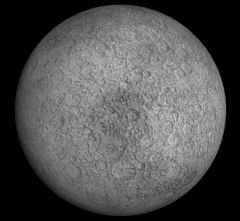Difference between revisions of "Dysnomia"
Jump to navigation
Jump to search
(Arvil moved page User:Arvil/Sandbox02 to 136199 Eris: Move to article page.) Tag: New redirect |
(Created page.) Tag: Removed redirect |
||
| Line 1: | Line 1: | ||
| − | + | {| cellpadding="2" cellspacing="0" style="margin:25px 0 0 10px; border:3px solid lightsteelblue;width:250px; font-size:90%; font-family:'Arial','Helvetica'; float: right; clear: right;"Pluto in Orbiter" | |
| + | !bgcolor="lightsteelblue" colspan="2" align="center" |Dysnomia | ||
| + | |- | ||
| + | |colspan="2" align="center"|[[Image:Dysnomia-ErisAndDysnomia-Orbiter2006P1.jpg|Eris|240px]] | ||
| + | |- | ||
| + | |colspan="2" align="center"|'''Dysnomia from ''ErisAndDysnomia.zip'' in Orbiter 2006P1''' | ||
| + | |- | ||
| + | !bgcolor="lightsteelblue" colspan="2"|Designation | ||
| + | |- | ||
| + | |Name||align="right"|Dysnomia | ||
| + | |- | ||
| + | |width="30%"|Reference body||align="right" width="30%"|Sun | ||
| + | |- | ||
| + | |width="30%"|Number of satellites||align="right" width="30%"|0 | ||
| + | |- | ||
| + | !bgcolor="lightsteelblue" colspan="2"|Planetary mean orbits | ||
| + | |- | ||
| + | |width="30%"|Epoch||align="right" width="50%"|2005.71598173516 | ||
| + | |- | ||
| + | |width="30%"|Semimajor axis (a)||align="right" width="50%"|37370000 m | ||
| + | |- | ||
| + | |width="30%"|Eccentricity (e)||align="right" width="30%"|0.013 | ||
| + | |- | ||
| + | |width="30%"|Inclination (i)||align="right" width="30%"|142° <br> (2.478367537831948 radian) | ||
| + | |- | ||
| + | |width="30%"|Longitude of the ascending node (LAN, ☊)||align="right" width="30%"|261.198642253875° <br> (4.55877630906891 radian) | ||
| + | |- | ||
| + | |width="30%"|Longitude of periapsis (ϖ)||align="right" width="30%"|175.525689125061° <br> (3.06350119706432 radian) | ||
| + | |- | ||
| + | |width="30%"|Mean longitude (L)||align="right" width="30%"|247.512810230255° <br> (4.31991347938186 radian) | ||
| + | |- | ||
| + | !bgcolor="lightsteelblue" colspan="2"|Selected physical parameters | ||
| + | |- | ||
| + | |width="30%"|Mean radius||align="right" width="30%"|175000 m | ||
| + | |- | ||
| + | |width="30%"|Mass||align="right" width="30%"|4.07380803368229×10<sup>19</sup> kg | ||
| + | |- | ||
| + | |width="30%"|Sidereal rotation period||align="right" width="30%"|-848746.7853712236 sec (-9.82 days) | ||
| + | |- | ||
| + | |width="30%"|SidRotOffset||align="right" width="30%"|0 | ||
| + | |- | ||
| + | |width="30%"|Obliquity||align="right" width="30%"|30.68° (0.535467015 radian) | ||
| + | |- | ||
| + | |width="30%"|LAN||align="right" width="30%"|0 | ||
| + | |- | ||
| + | |width="30%"|Note||align="right" width="30%"|*Elements given are from Dysnomia.cfg (ErisAndDysnomia.zip) | ||
| + | |} | ||
| + | |||
| + | '''Dysnomia (S/2005 (2003 UB<sub>313</sub>))''' is the only known satellite of the [[Dwarf planet]] 136199 Eris, and was discovered by [[w:Michael E. Brown|Mike Brown]] at the [[w:W. M. Keck Observatory|Keck Observatory]] in September 2005. | ||
| + | |||
| + | Dysnomia was named after [[w:Dysnomia (deity)|Dysnomia]] the daughter of [[w:Eris (mythology)|Eris]]. | ||
| + | |||
| + | == Dysnomia in Orbiter == | ||
| + | Dysnomia was first introduced with the release of ''ErisAndDysnomia.zip'' in May 2008. | ||
| + | |||
| + | {| class="wikitable" style="text-align: center" | ||
| + | |colspan="8"|<center>'''Orbiter versions and add-ons which include Pluto'''</center> | ||
| + | |- | ||
| + | !Add-on!!Source!!Version!!Author!!Type!!Release Date!!Compatibility!!Wiki article | ||
| + | |- | ||
| + | |[https://www.orbiter-forum.com/resources/eris-and-dysnomia.521/ Eris and Dysnomia]||O-F Resources||2008-05-10||Piper||Scenery||11 May 2008|||| | ||
| + | |} | ||
| + | |||
| + | == Gallery == | ||
| + | <gallery widths="100" heights="100"> | ||
| + | Dysnomia-ErisAndDysnomia-Orbiter2006P1.jpg|Dysnomia from ''ErisAndDysnomia.zip'' in Orbiter 2006P1</center> | ||
| + | Hubble Dysnomia orbit overlay.jpg|<center>Image of Eris and Dysnomia by [[w:Hubble Space Telescope|Hubble]] in August 2006<br>from Wikimedia Commons</center> | ||
| + | </gallery> | ||
| + | |||
| + | ==References== | ||
| + | |||
| + | [[Category:Articles|Dysnomia]] | ||
| + | [[Category:Celestial bodies|Dysnomia]] | ||
| + | [[Category:Solar System|Dysnomia]] | ||
| + | [[Category:Natural satellites|Dysnomia]] | ||
| + | [[Category:Trans-Neptunian objects|Dysnomia]] | ||
| + | |||
| + | {{SolarSystem}} | ||
Revision as of 03:35, 23 October 2024
Dysnomia (S/2005 (2003 UB313)) is the only known satellite of the Dwarf planet 136199 Eris, and was discovered by Mike Brown at the Keck Observatory in September 2005.
Dysnomia was named after Dysnomia the daughter of Eris.
Dysnomia in Orbiter
Dysnomia was first introduced with the release of ErisAndDysnomia.zip in May 2008.
| Add-on | Source | Version | Author | Type | Release Date | Compatibility | Wiki article |
|---|---|---|---|---|---|---|---|
| Eris and Dysnomia | O-F Resources | 2008-05-10 | Piper | Scenery | 11 May 2008 | ||
Gallery
Image of Eris and Dysnomia by Hubble in August 2006
from Wikimedia Commons
References
| edit The Solar System | |
|---|---|
| Central star |
Sun (Sol) |
| Planets |
Mercury - Venus - Earth - Mars - Jupiter - Saturn - Uranus - Neptune |
| Natural satellites |
Moon - Phobos - Deimos - Io - Europa - Ganymede - Titan - more... |
| Add-ons |
Planets - Dwarf Planets - Small objects - Natural satellites - Alternative star systems |


